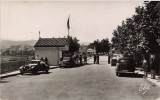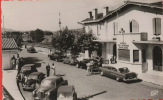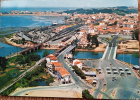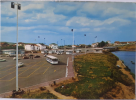Cloud Strife
Established Member
- Joined
- 25 Feb 2014
- Messages
- 2,361
I'm really struggling to make sense of how trains actually operated at Irun and Hendaye before the end of border controls in 1993/1995. I know/understand that trains operated something like this:
Madrid -> Hendaye -> Paris
Paris -> Irun -> Madrid
But what I can't comprehend is how this all worked. Did trains also stop at Irun (on Madrid -> Hendaye journeys) and in the other way, did they stop at Hendaye on the Paris -> Irun route?
What I also can't make sense of is how border formalities were handled. Did passengers go through border control at the changeover station for both France and Spain, or did one country do their controls 'on the move' while the country of arrival carried out checks on the platforms?
Thanks for any help with this mystery!
Madrid -> Hendaye -> Paris
Paris -> Irun -> Madrid
But what I can't comprehend is how this all worked. Did trains also stop at Irun (on Madrid -> Hendaye journeys) and in the other way, did they stop at Hendaye on the Paris -> Irun route?
What I also can't make sense of is how border formalities were handled. Did passengers go through border control at the changeover station for both France and Spain, or did one country do their controls 'on the move' while the country of arrival carried out checks on the platforms?
Thanks for any help with this mystery!




